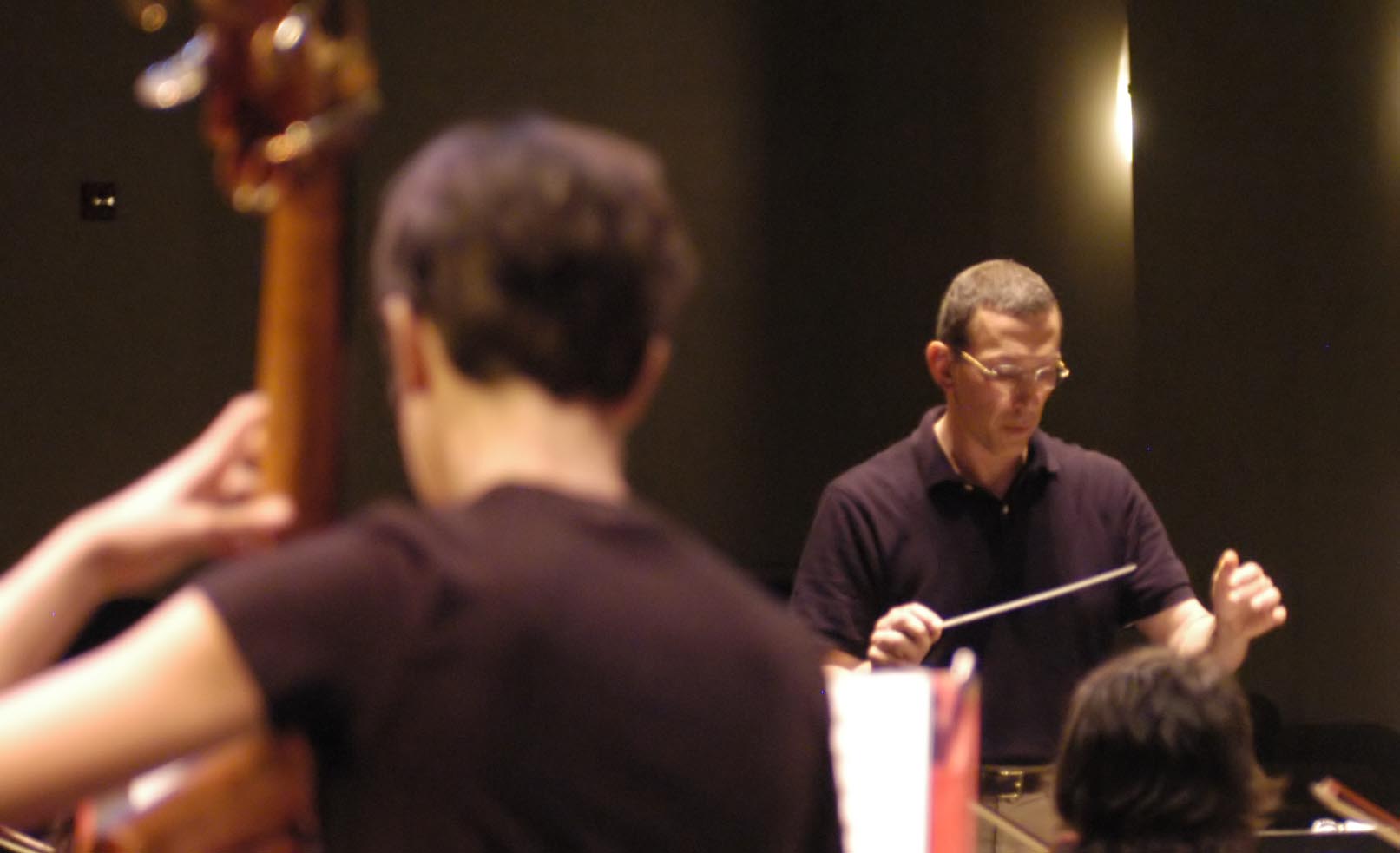It is a virtuoso program for orchestra and a dream performance for developing musicians, showcasing the talent and beauty of individual performers and instrumental sections.
Tonight, the UCLA Philharmonia will be led by musical director and conductor Neal Stulberg to four works spanning two centuries: Brahms’ “Haydn Variations”; “Martinu’s Double Concerto for Two String Orchestras, Piano and Timpani”; Debussy’s “Prélude à “˜L’Ãprés-Midi un Faune'”; and Ginastera’s “Variaciones Concertantes.”
“You get to hear all the different parts of the orchestra,” said Julia Barnett, a first-year doctoral student in flute performance and pedagogy. “You hear it as a unified organism, but also the different parts of the body and how we work together, and we also have our different strengths.”
Stulberg said each of the four pieces are very different yet fundamental to a developing musician’s palette of knowledge.
He chose the arrangement considering both what is beneficial to the student performers, as well as what would entice the audience to come and enjoy the orchestra’s performance.
“It has to be attractive, but we also want it to be something people might be familiar with or perhaps something new to them,” Stulberg said.
The show will open with Brahms’ classic “Haydn Variations,” a positive, delicately put-together set of variations. The piece is widely familiar to classical performers, featuring all sections of the orchestra in one seamless composition.
In contrast to the upbeat, positive composition of Brahms, the much darker work of Martinu’s “Double Concerto” will follow. It is the least well-known of the four works but has perhaps the most emotional story and impact. Written in 1938 by a Czech composer living in Switzerland, the piece was a response to the Nazi invasion of his country.
“It made a huge impact on the audience because it was highly dramatic and intense music about freedom, the struggle for freedom and people on the verge of losing it,” Stulberg said.
In honor of Martinu’s composition, the Philharmonia has extended a special invitation to the Czech community of Los Angeles and is expecting the consulate general from the Czech Republic in Los Angeles to speak briefly before the performance.
Debussy’s “Prélude à “˜L’Ãprés-Midi un Faune (Afternoon in the Faun),” a revolutionary piece that moved music forward into the 20th century, is all about color and subtle changes of timbre.
Based on a poem by Mallarmé, it contrasts Martinu’s edgy, angular work with smooth edges, subtle transitions and an overall sense of quiet.
The program will finish with the Ginastera’s “Variaciones Concertantes,” with variations featuring a concoction of instruments from the flute to the viola and the harp.
“There’s really not a piece in the program that you could say is the runt of the litter,” said Christopher Lade, a first-year graduate student in music performance who will play the piano in the upcoming performance.
With a selection of pieces with different popularities and strengths being performed by the UCLA Philharmonia, Stulberg draws his own personal enjoyment from the revitalization the works get when played by an orchestra of student musicians.
“It’s always wonderful to see familiar pieces through the eyes of players that are coming to them for the first time because there is a real excitement of discovery,” Stulberg said. “Their enthusiasm and their energy affects my performance of the piece, too. I’m receiving this very fresh excitement and approach from the players, and it inspires me.”
The show packs in a multiplicity of sounds aiming to evoke a wide range of emotional responses from the audience, something that Lade enjoys in his performances.
“The amount of inherent energy, that’s what I’m looking forward to the most,” Lade said. “This already has built-in anxiety in it.”
Barnett said that the difficulty of the performance is often forgotten in the amazement of the composition’s beauty and the magic created by a group of musicians playing as a body.
“I love the aspect of this concert where so many different instruments are given a way to show off, yet still be part of a bigger picture,” Barnett said. “I hope (the audience) can see how by playing music, you can really be part of something huge, like some really giant artistic body, then still have your personal moments as well.”
